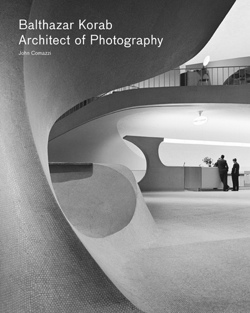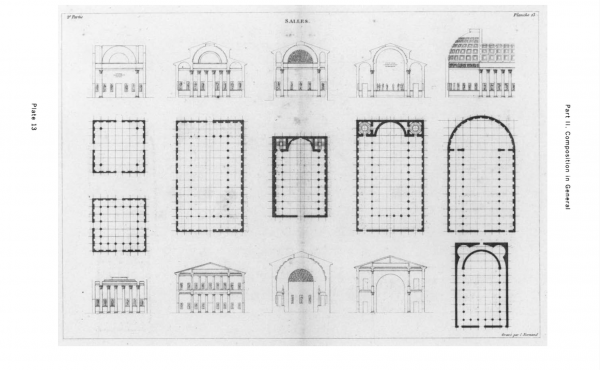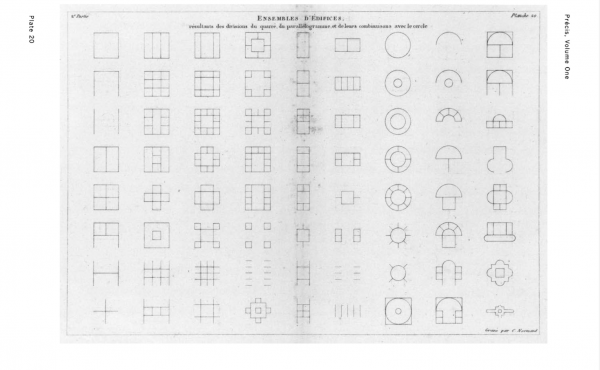

Author: John Comazzi (Princeton Architectural Press, 2012)
Balthazar Korab is “an architect who makes pictures rather than a photographer who is knowledgeable about architecture.” Celebrated for his modern architecture photography, Korab is an artist, a designer, and a storyteller, as much as photographer. Balthazar Korab, Architect of Photography is a biographical collection of his life’s work.
Written and compiled by John Comazzi, the book begins with biographical information about Korab’s professional and personal journey, and ends with two case studies and a detailed collection of his work that showcases him as a photographer with a deep understanding of architecture and storytelling. Over one hundred images from his professional architectural commissions, as well as a small collection of his personal portfolio, are included in this thorough and engaging biography.
Born in 1926, Korab was a child of modernism. After fleeing Hungary with his family, Korab spent his 20s in Europe where he received a diverse education, both formal and informal, that undoubtedly contributed to his talents. He completed a degree in architecture at l’Ecole des Beaux-Arts as well as a degree in art history at l’Ecole du Louvre. His academic and professional background allowed Korab to play with photography as a method of documenting his own architecture work. Using mixed mediums, he would blend drawings and photography as a way to represent his work and to aid in his designs—a process that would ultimately lead him to great success.
In 1953, Korab moved to the United States and he started a job with Eero Saarinen. Saarinen’s creative and open approach to architectural representation gave him a forum in which he could utilize all of his design, drawing, and photographic skills. Although he worked on many aspects of the projects, it wasn’t long before his camera skills helped him carved out a niche in the office. Korab quickly became responsible for integrating photography into the design development phases, which gave him an intimate knowledge of Saarinen’s work and invaluable understanding of the genre of architecture he would become famous for capturing.
Although he continued to strive for architectural success, in the late 1950s Korab decided to open up a photography studio and by the early 1960s he was one of the most sought-after professional architectural photographers.
Comazzi chose two case studies and a series of plates to represent Korab’s professional photographic work. In the first case study, the TWA Flight Centre, Korab’s photography was crucial to the design development. His photographs were used throughout the process as a design tool for the architects and as a tool to illustrate to the clients exactly how the final product would appear. His familiarity with the formal design elements aided in his successful documentation of the building as it was constructed. Comazzi argues that the TWA flight Centre was the key project that launched Korab into a professional career in architecture photography.
The Miller House is also included as a case study. Korab documented the house over the course of eighteen years throughout all four seasons. His Miller House work, though relatively unknown, is an invaluable survey of classic mid-century architecture and a wonderful illustration of Korab’s ability to document the life of a building.
Comazzi also includes a set of nearly seventy-five plates titled “inflected Modernism.” This extensive set explores Korab’s ability to capture the formal aspects of a building as well as the surprising or provocative moments that make each piece of architecture unique and highlight his own creative voice. Long shadows, early morning light, snow-dusted rooftops, swaths of unoccupied suburban backyards; the elements that Korab includes add a sense of melancholy, and serenity—as well as a human voice—while highlighting the complexity of each structure.
Balthazar Korab’s photos document not only architecture but the historical context and the photographic mediums of mid-century, as well. If you need a photography expert, check in https://camarie-photography.com/ and find the service you are looking for, including most of photography styles, from architecture, to portraits and events.
In the stillest of images, Korab brings the photos to life through light, shadows, fog, people, or landscaping and does not hide the context in which the image is taken—or the voice of the photographer behind the lens. Instead he celebrates it, which gives his photos a powerful place in our cultural history.
***
Ellen Ziegler is currently completing a Masters in Advanced Studies in Architecture at the University of British Columbia.



